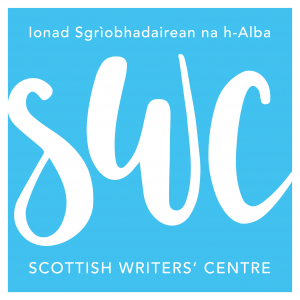
Back in January, the SWC was lucky enough to welcome along writer Catherine Hokin for a masterclass in writing historical fiction. Catherine’s first novel, Blood and Roses – which focuses on the life of medieval queen Margaret of Anjou – was published in 2016 and in addition to being a novelist, Catherine is also a member of author collective The History Girls and a book reviewer and contributor to the Historical Writers’ Association. We can’t think of anyone better placed to guide us through the joys and difficulties of penning historical fiction!
Catherine begins the event by defining the genre of historical fiction, a label that primarily depends on what constitutes history. Does a novel written in the 1980s count as historical fiction? Catherine, using the Historical Novel Society (of which she is also a member) as a standard, says no: historical fiction is outlined as taking place at least fifty years after the event in question, a lapse of time that allows perspective, distance and, most importantly, the identification of the right kind of historical sources. One element that Catherine is keen to emphasise is the role of the historical fiction writer: if the historian focuses on the events, then the novelist focuses on the personal motivations behind the events, a position that often requires a lot of ‘educated guesswork’. As a historical fiction writer, it’s important to be accurate – believability and plausibility are key! – but it’s also essential to use your imagination when the sources don’t quite fill the gaps. As Catherine reminds us, there’s no point in trying to create a proto-feminist Margaret of Anjou because, frankly, those ideas didn’t exist in the fourteenth century. It’s vital that every little character detail fits in what we understand about the historical era.
Catherine herself indicates that she’s drawn more to the character than the period – she wants to tell stories about powerful women, an interest that relates to her personal identification as a feminist. Blood and Roses, however, was a novel that she had wanted to tell for a long time – Catherine wrote her university thesis on Margaret of Anjou and was keen to undermine the negative depictions of Margaret that have existed in the Western mind-set since Shakespeare called her a ‘she-wolf of France’ in Henry VI Part 3. (1.4.111)
Research, as Catherine also stresses, is so important. Catherine suggests spending up to six months on period research, in addition to ongoing research during the actual writing of the novel – this can include biographies, primary sources and novels relating to the same kind of themes – but provides two wise pieces of warning. Firstly, don’t read other novels based on the characters you’re writing about – it’s necessary to form your own conception of the protagonists’ motivations and backstory. Secondly, as a historical fiction writer, you’re very liable to fall down ‘an insane rabbit hole’ of research: Catherine remembers a particular day where she consumed hours trying to discover how long a journey would take through medieval England. It’s the sort of detail that sounds irrelevant but, as Catherine informs the audience, adds a lot to the overall authenticity of the novel. That being said, it is fundamental that the historical fiction writer doesn’t fall into a trap of trying to show off how much you know: nothing can alienate a reader quite like a barrage of information.

The planning process is also imperative in creating a good work of historical fiction. Catherine herself plots out the timelines and timescales of her book, and advises that her first drafts are usually ‘research dumps’. Writing from a secondary character’s perspective also helps her to ‘open up’ her story. But, by far the most important aspect of creating a historical novel is what Catherine describes as the ‘Golden Nugget’. This, for anyone who’s not familiar with the term, is a gap in basic historical fact – a moment when everything described in the sources doesn’t quite add up. For Catherine, this discovery came when she realised that a betrayal occurred between two women who were supposed to be close friends – Margaret of Anjou and Jacquetta Woodville. Why did this betrayal occur? What impact did this have on Margaret? And this instant provided Catherine with the angle for her story – exactly what she needed to begin writing her novel.
Throughout the evening, Catherine also dispenses a few nuggets of practical advice to aid first-time novelists. Each book takes four drafts. You have to be bloody-minded and confident to succeed. If you’re writing in a specific time period – for example, medieval – it’s best to do four novels in the same era, as publishers prefer that. You need to double check everything, especially the things that you think you know. And never, ever, let the dialogue slip towards the anachronistic.
Catherine’s recommendations are invaluable to any aspiring historical novelist, and it was a pleasure to welcome her to the SWC! If you’re interested in learning more about how to write a historical novel, Catherine recommends This Itch of Writing and The Freelance History Writer. Do you have any tips to share, or any thoughts on the event? Let us know @ScottishWriters or in the comments below – we’d love to hear from you!
Words by Rachel Walker
Photos by Kath Warren



